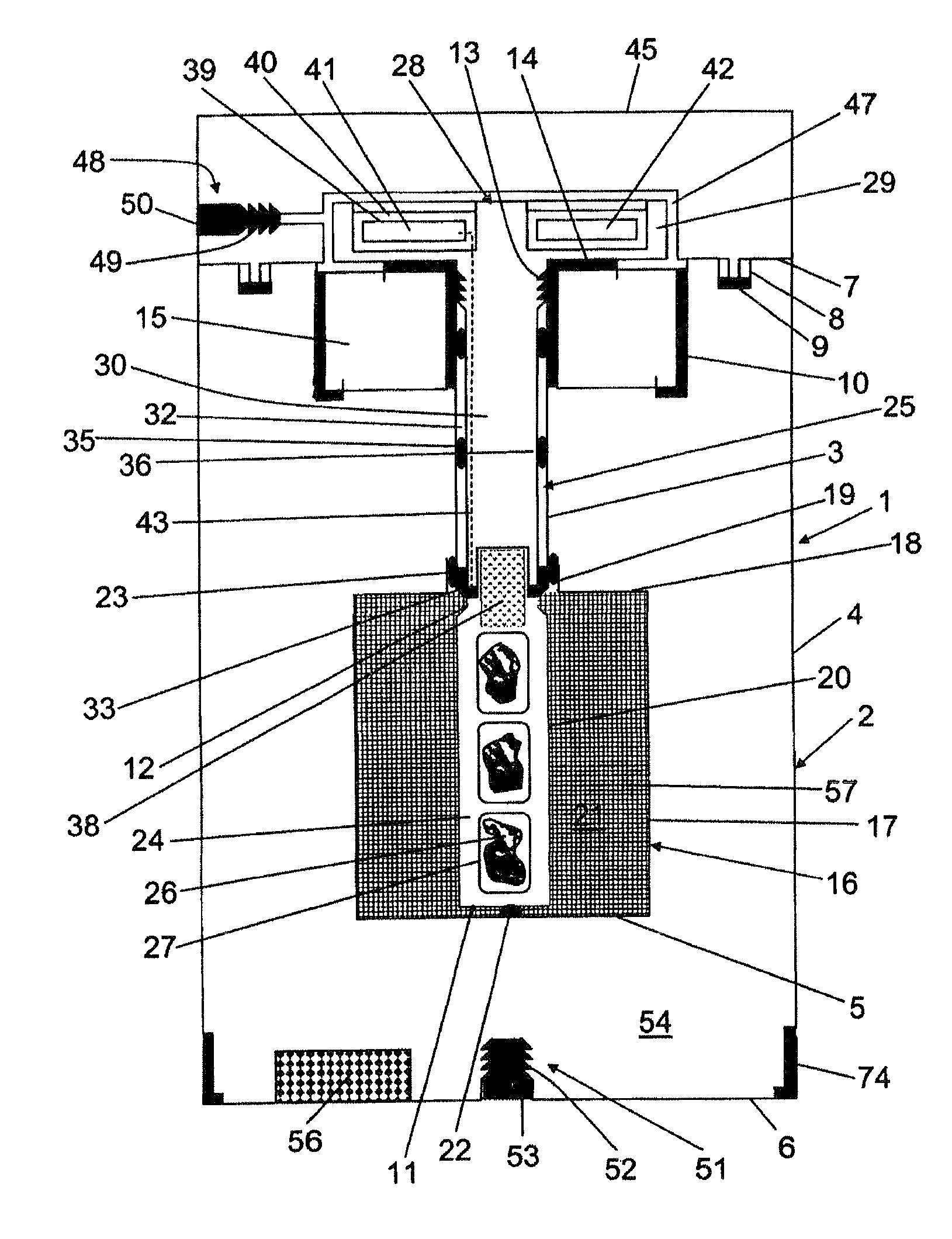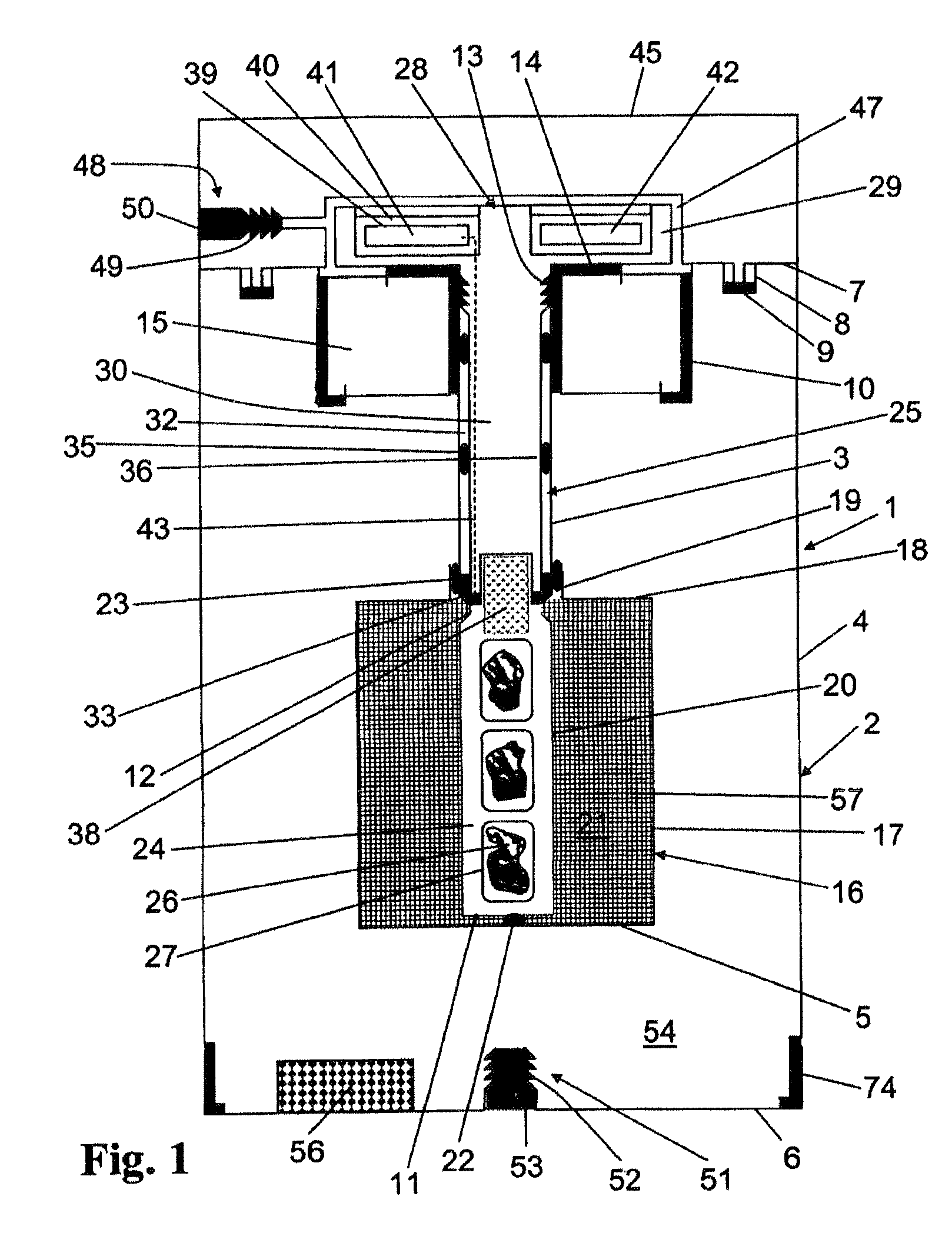Transport container for maintaining the temperature of frozen goods
a technology for transporting containers and frozen goods, applied in the field of transport containers, can solve the problems of inability to solve the problem of reducing the temperature of the container, the plastic has to be resistant to the (organic) coolant, and the problem of high vacuum tightness, so as to reduce the cross section of the heat conducting inner wall, reduce the cross section of the conduction cross section, and improve the effect of performan
- Summary
- Abstract
- Description
- Claims
- Application Information
AI Technical Summary
Benefits of technology
Problems solved by technology
Method used
Image
Examples
Embodiment Construction
[0031]The transport container 1, drawn in an upright position in FIG. 1, comprises an approximately cup-shaped insulation container 2 with an inner wall 3 and an outer wall 4, as well as an inner base 5 and an outer base 6. The outer base 6 (as is also explained in FIG. 11) is plugged onto the slightly retracted lower end of the outer wall 4 and adhesively bonded or soldered onto the latter.
[0032]At the upper end, the outer wall merges into an interior flange 7, which comprises an annular groove 8 for holding a container seal 9 and which merges into a downwardly extending, peripheral connection web 10.
[0033]The inner wall 3, produced from thin-walled stainless steel, is designed to be thin like a pipe and is provided at its lower end with a chamber base 11; it has a beaded constriction 12 at medium height, supports a female thread 13 at its upper end, and merges directly above this into an outwardly protruding annular flange 14.
[0034]An insulation ring 15 is provided at the upper en...
PUM
 Login to View More
Login to View More Abstract
Description
Claims
Application Information
 Login to View More
Login to View More - R&D
- Intellectual Property
- Life Sciences
- Materials
- Tech Scout
- Unparalleled Data Quality
- Higher Quality Content
- 60% Fewer Hallucinations
Browse by: Latest US Patents, China's latest patents, Technical Efficacy Thesaurus, Application Domain, Technology Topic, Popular Technical Reports.
© 2025 PatSnap. All rights reserved.Legal|Privacy policy|Modern Slavery Act Transparency Statement|Sitemap|About US| Contact US: help@patsnap.com



